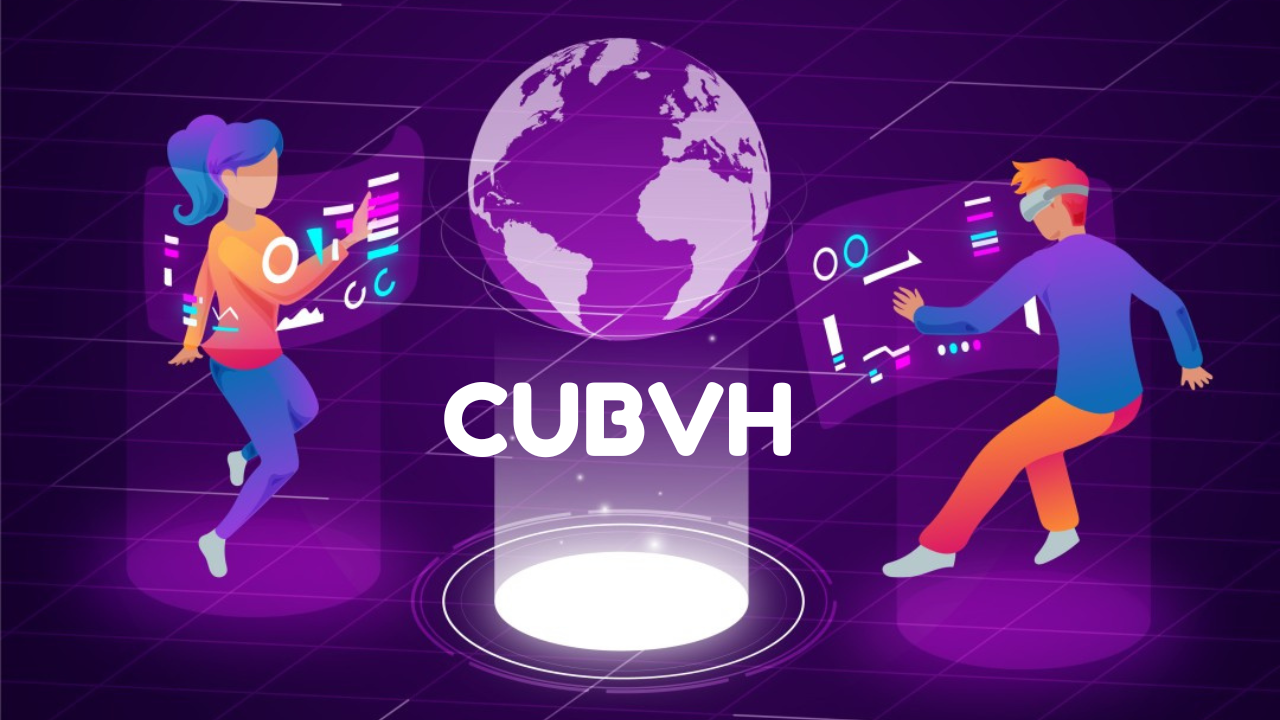CUBVH: Revolutionize GPU Ray Tracing with Our Advanced BVH Toolkit
In the dynamic world of computer graphics and simulation, the need for efficient, high-performance ray tracing applications on GPUs is growing at a remarkable pace. As industry professionals, we understand the importance of staying ahead in this rapidly evolving field. That’s why we’re excited to introduce cubvh, an innovative CUDA Mesh Bounding Volume Hierarchy (BVH) acceleration toolkit.
In this article, we’ll delve into the core features, functionalities, and advantages of cubvh. We will also explore its various applications, offering a comprehensive guide to harnessing its potential for GPU-based ray tracing. Whether you’re a developer looking to enhance your rendering capabilities or a researcher exploring new frontiers in simulation, cubvh provides the tools and efficiency needed to elevate your projects. Join us as we navigate the exciting possibilities that cubvh brings to the world of computer graphics.
Navigating the World of cubvh
What is cubvh?
In the ever-evolving landscape of computer graphics and simulation, efficiently managing complex scenes for real-time rendering presents a significant challenge. cubvh rises to this challenge by harnessing the immense computational capabilities of GPUs, accelerating ray tracing tasks to new heights. But what exactly does cubvh encompass? To truly grasp its impact, we need to explore the concept of a CUDA Mesh Bounding Volume Hierarchy (BVH) and its critical role in enhancing ray tracing efficiency.
Understanding Bounding Volume Hierarchy (BVH)
A Bounding Volume Hierarchy (BVH) is a sophisticated data structure that organizes geometric primitives, such as the triangles in mesh models, into a hierarchical layout of bounding volumes. These volumes function as spatial partitions, effectively grouping subsets of geometry. By doing so, a BVH facilitates the rapid exclusion of irrelevant elements during ray tracing, thus acting as a navigational guide through complex scenes. This approach significantly reduces the number of necessary intersection tests, making it an essential tool for optimizing the performance of ray tracing algorithms. The hierarchical nature of a BVH is key to minimizing computational overhead and streamlining the traversal of intricate virtual environments.
The Capabilities of cubvh
cubvh is designed to simplify and enhance the processes involved in constructing and traversing BVHs, with a particular focus on GPU-based mesh acceleration.
Efficient BVH Construction from Triangle Meshes
One of the standout features of cubvh is its capability to construct BVHs from triangle meshes with exceptional efficiency. By leveraging the parallel processing power of CUDA cores, cubvh enables developers to convert detailed mesh models into streamlined BVH structures. This transformation not only accelerates the rendering pipeline but also improves the overall efficiency of ray tracing applications by reducing the complexity of intersection tests.
Rapid BVH Traversal for Ray Intersection
A fundamental aspect of any ray tracing system is the ability to quickly and accurately identify where rays intersect with scene geometry. cubvh excels in this area by offering advanced algorithms that facilitate the traversal of BVHs. These algorithms are optimized to perform ray intersection queries with remarkable speed, ensuring that rays accurately reach their intended targets with minimal computational effort. This efficiency is crucial for applications demanding real-time rendering and complex visual simulations, where both performance and precision are paramount.
Empowering Advanced Graphics and Simulation
By providing a comprehensive set of tools for constructing and traversing BVHs, cubvh empowers developers and researchers to explore new frontiers in GPU-accelerated ray tracing. Whether you are working on the latest visual simulations or striving to create breathtaking visual effects, cubvh equips you with the technology needed to achieve unparalleled speed and accuracy. It offers a pathway to innovation, enabling you to bring your creative visions to life with extraordinary efficiency.
Additional Features and Benefits of cubvh
Expanding Beyond Core Functionalities
In addition to its foundational capabilities, **cubvh** provides a suite of advanced features designed to enhance the user experience in GPU-accelerated ray tracing. Among these are dynamic BVH updates and efficient memory management techniques, which together offer a comprehensive toolkit tailored for high-performance rendering applications.
Embracing the Advantages of cubvh
Optimized Performance for GPU-Based Ray Tracing
By harnessing the power of GPUs, cubvh significantly boosts the performance of ray tracing applications. Its optimized algorithms for BVH construction and traversal allow developers to achieve exceptional rendering speeds and efficiencies. This enhancement is crucial for creating visually complex scenes without sacrificing real-time interactivity.
Efficient Memory Usage
cubvh also addresses common memory challenges associated with GPU-based ray tracing. It incorporates memory-efficient data structures and traversal techniques that help minimize memory overhead. This optimization enables developers to work with larger and more intricate scenes, ensuring a smoother and more efficient rendering process.
Simplified Development Workflow
With a user-friendly interface and detailed documentation, cubvh streamlines the development process for both beginners and seasoned professionals. The toolkit’s comprehensive features support rapid prototyping and iterative development, reducing the time required to bring ray tracing applications to market.
Getting Started with cubvh
Prerequisites
Before embarking on your journey with GPU-accelerated ray tracing using cubvh, ensure you have the necessary prerequisites. This includes installing the CUDA Toolkit and confirming that your hardware meets the required specifications for efficient computation.
Installation Guide
To set up cubvh, follow these straightforward steps:
1. **Install CUDA Toolkit:**
Download and install the version of the CUDA toolkit that is compatible with your system.
2. **Verify GPU Compatibility:**
Ensure your GPU is compatible with CUDA to leverage its capabilities.
3. **Download cubvh:**
Access the latest version of cubvh from its official repository.
4. **Install cubvh:**
Follow the installation instructions provided in the repository’s README file.
Building from Source
For developers interested in a deeper understanding of cubvh, building the toolkit from source code can provide valuable insights. Here’s how to get started:
1. **Clone the Repository:**
“`shell
git clone https://github.com/cubvh/cubvh.git
“`
2. **Navigate to the Directory:**
“`shell
cd cubvh
“`
3. **Install Dependencies:**
“`shell
sudo apt-get install -y build-essential cmake
“`
4. **Build the Project:**
“`shell
cmake . && make
“`
Integrating cubvh into Your Projects
Basic Usage Example
To integrate cubvh into your ray tracing projects, consider the following basic example:
“`cpp
#include <cubvh.h>
int main() {
// Initialize cubvh and load triangle mesh data
cubvh::MeshData meshData = LoadMeshData(“scene.obj”);
// Build BVH from loaded mesh data
cubvh::BVH bvh = cubvh::BuildBVH(meshData);
// Perform ray intersection queries
Ray ray = GenerateRay();
IntersectionResult result = bvh.Intersect(ray);
// Process intersection result
ProcessIntersectionResult(result);
return 0;
}
“`
This example demonstrates the essential steps of integrating cubvh, from constructing a BVH to querying ray intersections within a ray tracing pipeline.
Advanced Usage Examples
For those looking to explore more sophisticated applications of GPU-accelerated ray tracing, cubvh offers numerous opportunities. Advanced usage examples can include implementing complex rendering techniques or experimenting with the toolkit’s more specialized features, showcasing the extensive possibilities available with this technology.
Additional Resources for cubvh
GitHub Repository
The [official GitHub repository](https://github.com/cubvh/cubvh) is an invaluable resource, offering access to source code, installation guides, and a platform for tracking issues and updates.
Documentation and Tutorials
Beyond the repository, a wealth of documentation and tutorials are available to enrich your experience with cubvh. These resources provide in-depth guides and practical examples, empowering developers to fully utilize the toolkit’s capabilities in their ray tracing projects.
Conclusion
At the forefront of innovation in GPU-accelerated ray tracing, cubvh represents a significant leap forward. Its cutting-edge BVH construction algorithms and high-speed ray intersection queries are transforming the landscape of real-time rendering on GPUs. As we look ahead, the potential of cubvh to push the boundaries of GPU-accelerated ray tracing is limitless.
By incorporating cubvh into your workflow, you can unlock enhanced performance, optimize memory usage, and streamline your development process. Don’t miss the opportunity to elevate your ray tracing applications to new heights. Start exploring cubvh today and discover the full potential of GPU-accelerated ray tracing.
FAQs
- What is cubvh and how does it help with ray tracing?
- cubvh is a CUDA Mesh BVH acceleration toolkit designed to enhance GPU ray tracing performance. It achieves this by efficiently constructing and navigating Bounding Volume Hierarchies (BVHs), which streamline the ray tracing process.
- How does cubvh manage large mesh models?
- cubvh utilizes a hierarchical BVH structure to organize large and complex mesh models. This structure allows for efficient processing and significantly speeds up ray tracing by reducing the number of calculations needed to determine ray-object intersections.
- What do I need to use cubvh?
- To use cubvh, you will need:
- The CUDA Toolkit
- A GPU that supports CUDA
- A development environment with CMake and a compatible compiler
- To use cubvh, you will need:
- How do I integrate cubvh into my project?
- To integrate cubvh into your project, follow these steps:
- Install the toolkit from the official GitHub repository.
- Include the necessary header files in your project.
- Link against the cubvh library.
- Utilize cubvh’s functions for BVH construction and ray intersection queries.
- To integrate cubvh into your project, follow these steps:
- Where can I find additional information and support?
- For more details and assistance, explore the following resources:
- GitHub Repository: Access the source code, installation guides, and issue tracking.
- Documentation: Comprehensive guides and technical references.
- Tutorials: Step-by-step examples to help you get started and explore advanced features.
- Community Forums: Engage with other developers and experts in the GPU ray tracing community for support and discussion.
- For more details and assistance, explore the following resources:







